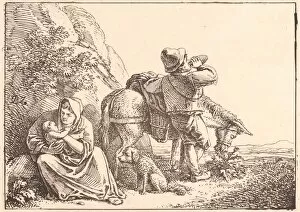Pen Lithograph Collection
"Exploring the World of Pen Lithographs: A Glimpse into 19th Century Art" Pen lithography, a technique that gained popularity in the early 19th century
For sale as Licensed Images
Choose your image, Select your licence and Download the media
"Exploring the World of Pen Lithographs: A Glimpse into 19th Century Art" Pen lithography, a technique that gained popularity in the early 19th century, allowed artists to create intricate and detailed prints using pens and lithographic stones. One notable example is Karl Friedrich Schinkel's masterpiece "Das Schloss Prediama in Crein XII Stund: von Triest, " created in 1816. This stunning piece showcases the artist's skillful use of pen strokes to capture the architectural beauty of the castle. Another remarkable collection from this era is "Forty Lithographic Impressions from Drawings of Landscape Scenery, " published in 1813. These prints offer a captivating glimpse into various landscapes, showcasing nature's beauty through delicate penwork. French artists also embraced pen lithography during this period. Eugene Delacroix's "Muletiers de Tetuan" depicts Moroccan muleteers with incredible precision and attention to detail. Nicolas Toussaint Charlet, known for his satirical works, used this technique to create humorous illustrations that reflected society at the time. Honore Daumier's "L'Antre du Lion" (1834) takes us on a journey into an intriguing lion's den through his skilled use of pen lithography. Meanwhile, Delacroix mesmerizes us with his depiction of Algerian women in "Women of Algiers (Femmes d'Alger)" (1833), capturing their grace and allure through intricate lines. Henry Bonaventure Monnier was another masterful practitioner of pen lithography. His works such as "Le Complement des Etudes (Jadis)" and "La Toilette (Aujourd'hui)" provide glimpses into everyday life during this era, while his series on childhood ("L'enfance") captures both nostalgia and contemporary scenes.





